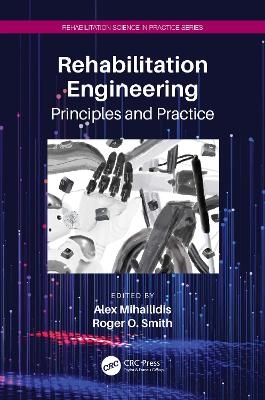
Rehabilitation Engineering
CRC Press (Verlag)
978-1-032-35482-8 (ISBN)
- Lieferbar (Termin unbekannt)
- Versandkostenfrei innerhalb Deutschlands
- Auch auf Rechnung
- Verfügbarkeit in der Filiale vor Ort prüfen
- Artikel merken
This book will provide an overview of the rehabilitation engineering field, including key concepts that are required to provide a solid foundation about the discipline. It will present these concepts through a mix of basic and applied knowledge from rehabilitation engineering research and practice. It's written as an introductory text in order to provide access to the field by those without previous experience or background in the field.These concepts will include those related to engineering and health that are necessary to understand the application of rehabilitation engineering to support human function.
Alex Mihailidis, Ph.D., P. Eng, is the Barbara G. Stymiest Research Chair in Rehabilitation Technology at the University of Toronto and Toronto Rehabilitation Institute. Roger Smith, MD, Ph.D., O.T., FAOTA, RESNA Fellow is Director of the Rehabilitation Research Design and Disability Center at the University of Wisconsin-Milwaukee.
Part 1: Introduction and Overview. 1. History of Rehabilitation Engineering. 2. Assistive Technology. 3. Key Human Anatomy and Physiology Principles as They Relate to Rehabilitation Engineering. 4. Psychosocial and Cultural Aspects of Rehabilitation Engineering Interventions. 5. Overview of Disease, Disability, and Impairment. 6. Rehabilitation Engineering across the Lifespan. Part 2: Key Topics in Rehabilitation Engineering. 7. Policy and Regulations in Rehabilitation Engineering. 8. Ethical Issues in Rehabilitation Engineering. 9. Rehabilitation Engineering in the Assistive Technology Industry. 10. Understanding the End-User. 11. Rehabilitation Engineering in Less Resourced Settings. Part 3: Rehabilitation Engineering and Areas of Application. 12. Rehabilitation Engineering Seating & Mobility Chapter. 13. Universal Design and the Built Environment. 14. Wireless Technologies. 15. Transporation Access. 16. Rehabilitation Robotics. 17. Universal Interfaces and Information Technology. 18. AAC in the 21st Century: The Outcome of Technology: Advancements and Amended Societal Attitudes. 19. Cognitive Technologies. 20. Technology for Sensory Impairments (Vision and Hearing). 21. Prosthetic & Orthotic Devices. 22. Neural Engineering. Part 4: Outcomes and Assessemnts. 23. Assessment Approaches in Rehabilitation Engineering. 24. Product Usability Testing and Outcomes: What Works? For Whom? and Why?
| Erscheinungsdatum | 05.10.2022 |
|---|---|
| Reihe/Serie | Rehabilitation Science in Practice Series |
| Zusatzinfo | 24 Tables, black and white; 24 Line drawings, black and white; 125 Halftones, black and white; 149 Illustrations, black and white |
| Verlagsort | London |
| Sprache | englisch |
| Maße | 156 x 234 mm |
| Gewicht | 453 g |
| Themenwelt | Medizin / Pharmazie ► Physiotherapie / Ergotherapie ► Orthopädie |
| Medizin / Pharmazie ► Physiotherapie / Ergotherapie ► Rehabilitation | |
| Medizin / Pharmazie ► Studium ► 1. Studienabschnitt (Vorklinik) | |
| Technik ► Medizintechnik | |
| Technik ► Umwelttechnik / Biotechnologie | |
| ISBN-10 | 1-032-35482-8 / 1032354828 |
| ISBN-13 | 978-1-032-35482-8 / 9781032354828 |
| Zustand | Neuware |
| Informationen gemäß Produktsicherheitsverordnung (GPSR) | |
| Haben Sie eine Frage zum Produkt? |
aus dem Bereich


